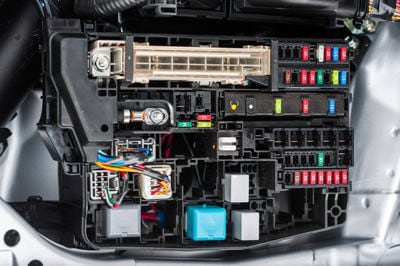Leading Tips for Effective Electrical System Troubleshooting
Troubleshooting electrical systems requires a methodical method, based in a thorough understanding of electrical principles and safety procedures. The nuances of reliable troubleshooting extend beyond simple technical understanding; recognizing just how to document findings and prioritize safety can considerably influence outcomes.
Understand the Essentials
Recognizing the essentials of electric systems is crucial for reliable troubleshooting, as a strong structure enables professionals to diagnose and resolve issues more successfully. A thorough understanding of electric concepts, such as voltage, present, resistance, and power, is important in determining the origin of problems. Voltage is the electric prospective difference that drives current through a circuit, while resistance opposes the circulation of present, affecting the total capability of the system.
Experience with circuit components, consisting of resistors, capacitors, diodes, and switches, is additionally vital. Each component plays a distinctive role in circuit actions and can impact performance when malfunctioning. In addition, comprehending collection and parallel circuit arrangements is vital, as these setups influence the distribution of voltage and present within the system.
Technicians should be conscious of prospective threats, such as shock and brief circuits, to execute risk-free troubleshooting methods. By understanding these fundamental principles, technicians boost their capability to carry out efficient diagnostics and repair services, inevitably leading to boosted efficiency and integrity of electric systems (electrical system troubleshooting).
Gather Necessary Tools
Reliable troubleshooting of electrical systems requires the right collection of devices to diagnose and resolve concerns precisely. Necessary devices include a multimeter, which determines voltage, current, and resistance, enabling for accurate evaluations of electrical components.
In addition, protected hand tools such as screwdrivers, pliers, and cord strippers are crucial for securely adjusting electrical links. It is also advisable to have a circuit tester accessible to confirm the visibility of voltage in outlets and wires. For even more complex systems, a thermal imaging camera can assist spot overheating parts, indicating possible failures.

Follow a Methodical Method
Having gathered the ideal devices, the following action in repairing electrical systems is to adhere to an organized strategy. A systematic approach ensures that specialists can determine mistakes effectively and precisely, lessening downtime and stopping unneeded repair services.
Begin by examining the system's schematic layouts and specs. Comprehending the style and operational parameters will certainly give context for detecting concerns. Next, isolate the problem location by making use of a procedure of elimination. This involves monitoring each element systematically, beginning with the power resource and functioning in the direction of the load.
Use testing tools, such as multimeters and oscilloscopes, to gather unbiased data about voltage, existing, and resistance at different points within the system. This empirical proof will lead your troubleshooting initiatives and help to validate or remove potential sources of failure.
In addition, take into consideration environmental variables that may influence the system's efficiency, such as temperature variations or wetness access. A thorough evaluation of circuitry, connections, and parts will make certain that all possibilities are made up.
File Your Searchings For
Extensive documents is vital in you can check here the repairing process of electric systems. Accurate records improve the efficiency of determining recurring concerns and promote communication among staff member. Each finding must be thoroughly kept in mind, consisting of signs visite site observed, examinations carried out, and the outcomes of those tests. electrical system troubleshooting. This method not just aids in comprehending the origin of the trouble but additionally functions as a recommendation for future repairing efforts.

Furthermore, keeping a log of parts changed or repairs carried out is vital. This info supports supply administration and can aid evaluate the longevity and integrity of certain elements.
Ultimately, the documents process should be extensive yet concise, making it possible for simple retrieval and evaluation - electrical system troubleshooting. By prioritizing thorough paperwork, read the full info here professionals can produce an important knowledge base that not just aids in present troubleshooting but additionally empowers future maintenance initiatives, thereby boosting overall system integrity

Prioritize Precaution
Acknowledging the integral risks linked with electrical systems is essential for making certain safety during troubleshooting. Electric shock, burns, and equipment damage are simply a few of the potential risks that professionals face. Prioritizing safety and security measures is not only a lawful commitment but likewise an ethical important that safeguards both the service technician and the surrounding environment.
Before beginning any type of troubleshooting job, technicians ought to don proper personal protective tools (PPE), consisting of shielded handwear covers, shatterproof glass, and flame-resistant clothes. Making sure that the workplace is completely dry and free of clutter can considerably lower the threat of crashes. Furthermore, it is important to de-energize circuits prior to starting any type of job, confirming that they are not endure making use of a multimeter or voltage tester.
Establishing clear communication protocols with team participants is additionally essential; this makes certain that every person knows prospective dangers and the condition of the electrical system being serviced. Having an emergency situation action plan in place can prove very useful in the occasion of an occurrence. By focusing on safety and security procedures, service technicians can efficiently mitigate threats and promote a safer work environment.
Final Thought
Effective electric system fixing counts on a thorough understanding of essential concepts and a methodical method. By gathering crucial tools, sticking to methodical assessment strategies, and carefully recording findings, the troubleshooting procedure becomes extra effective and reliable. Focusing on precaution ensures the wellness of people included and the stability of the electric system. Executing these strategies will boost the troubleshooting experience, resulting in quicker resolutions and improved operational performance in electrical systems.